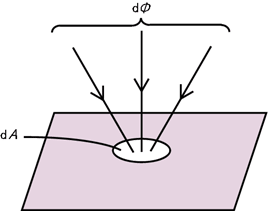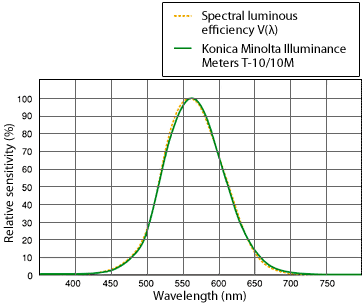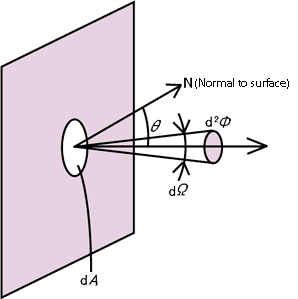Precise Color Communication
 |
Illuminance

Illuminance is the amount of light incident on a surface per unit area, and is calculated using the CIE spectral luminous efficiency V(λ) which represents the relative spectral response of the human eye for photopic vision.

Illuminance Ev is calculated as follows:
Ev=dΦv/dA
where
dΦv: Luminous flux incident on a given surface element
dA: Area of the surface element
The units of illuminance are lux (lx).
Illuminance can be measured using an illuminance meter, or if measurements of both illuminance and color are desired, an incident color meter can be used to measure both at the same time.
Luminance

Luminance is the amount of light coming from a light source or secondary light source (such as a reflecting surface or transmitting surface) in a given direction, and is calculated using the CIE spectral luminous efficiency V(λ) which represents the relative spectral response of the human eye for photopic vision.
Luminance Lv is calculated as follows:
Lv=d2Φv/dΩ·dΑ·cosθ
where
d2Φv: Luminous flux within the solid angle dΩ that reaches or passes through a given area in a given direction
dA: Cross-sectional area of luminous flux
θ: Angle between the direction of the luminous flux and the normal to the surface of the cross-section.
The units of luminance are cd/m2 (candela per square meter)
Luminance can be measured using a luminance meter, or if measurements of both illuminance and color are desired, a luminance color meter or spectroradiometer can be used to measure both at the same time.
| Illuminance and luminance meters |
| Luminance color meters |
| Spectroradiometer |
| 12/12 | ||
|
|

